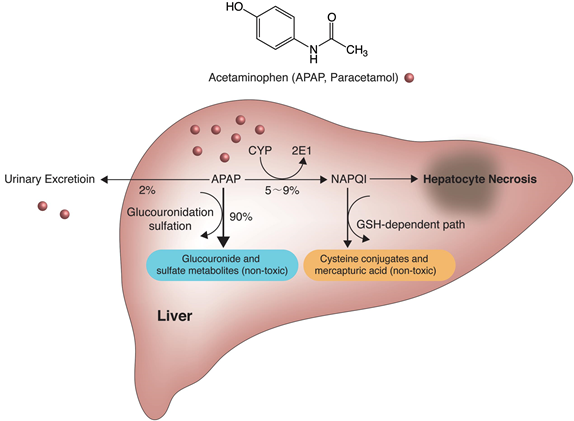
Yoon E , Babar A , Choudhary M , et al. [J]. Journal of Clinical & Translational Hepatology, 2016, 4(2):131-142.
APAP is taken up in the intestine within the first 2 hours after oral administration, metabolized in the liver via glucoronidation and sulfonation, and excreted in the urine. A small fraction (10-15%) is metabolized in hepatocytes by cytochrome P450 isomers to the alkylated, highly toxic metabolite N-acetyl-p-benzoquinoneimine (NAPQI). Antioxidant glutathione (GSH) converts NAPQI to the less harmful reduced form, which is then excreted via bile. When glutathione is depleted, increasing amounts of NAPQI bind to mitochondrial proteins and leading to hepatocyte necrosis.
In vivo efficacy of Celastrol in APAP induced acute liver injury model

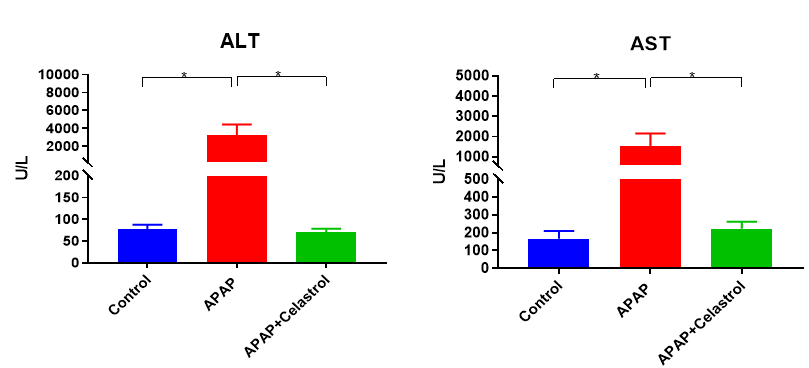
Celastrol treatment alleviate increased ALT and AST enzyme activity induced by APAP. Values are expressed as mean ± SEM. *p<0.05.
Protective effects of Celastrol in APAP model
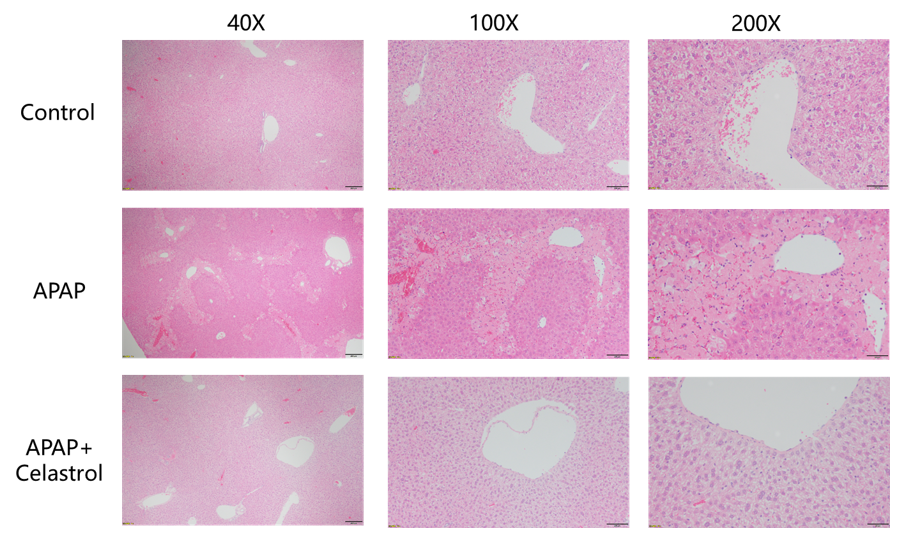
Protective effects of Celastrol in liver injury. Coagulative necrosis and bruising of cells in the marginal zone of the hepatic lobules were seen to varying degrees in the livers of the modeled animals, and the Celastrol treatment group showed significant improvement in the pathology.
Celastrol reduced apoptosis in APAP Model
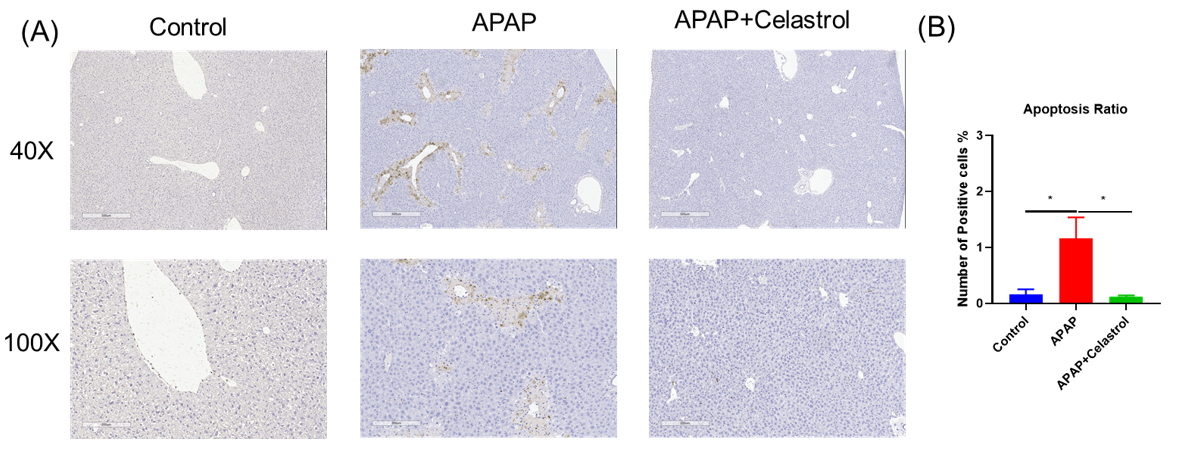
Celastrol reduced apoptosis in APAP induced liver injury. (A) Tunel staining showing apoptosis in hepatic cells. (B) Statistic data of Tunel positive staining.
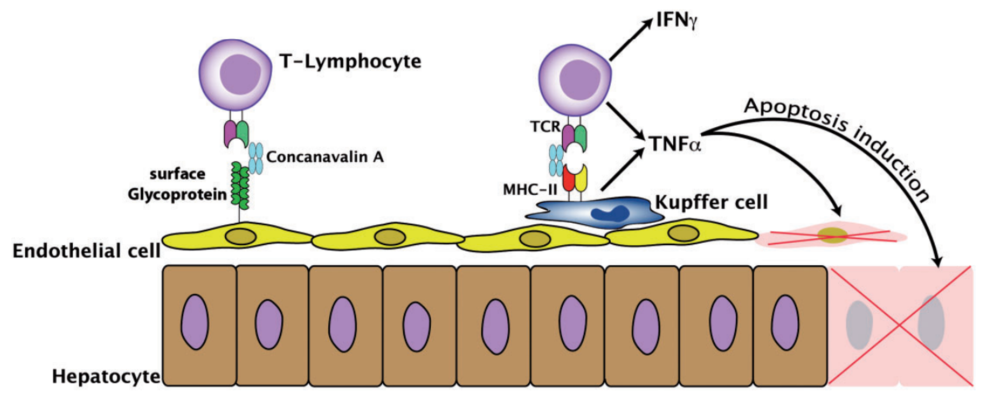
Heymann F, Hamesch K, Weiskirchen R, Tacke F.. Lab Anim. 2015 Apr;49(1 Suppl):12-20.
The pathogenesis and pathological changes in the ConA-induced mouse hepatitis model, in which liver injury is mediated by T cell and macrophage activation, partially mimic those of human autoimmune hepatitis, and therefore this model has been widely used to study the pathogenesis, pathological changes, and clinical treatment of diseases such as autoimmune hepatitis. Hepatocyte apoptosis, necrosis, and leukocyte infiltration are seen as prominent features of immune hepatitis. In this model, activated T cells and macrophages infiltrate the liver tissue mesenchyme and induce the secretion of several pro-inflammatory factors, such as TNF-α, IFN-γ, IL-1β and IL-2.
ConA model establishment and In vivo efficacy of Celastrol in ConA Model

Detection of liver injury-related factors in a ConA-guided NASH model after Celastrol intervention. (A) Celastrol treatment alleviate increased ALT and AST enzyme activity induced by ConA .
Pathological analysis in the protective effect of Celastrol on ConA induced NASH mouse models.
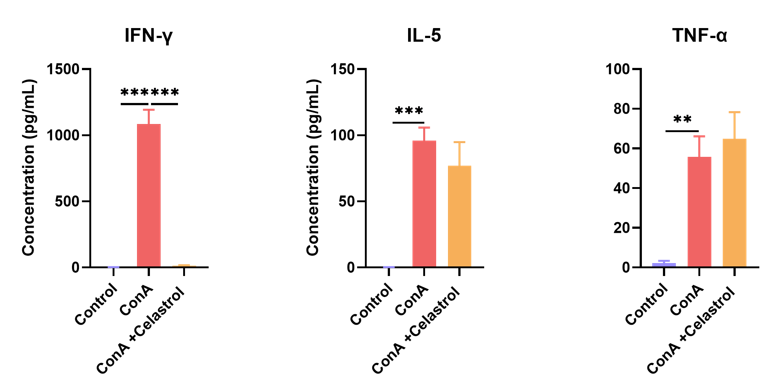
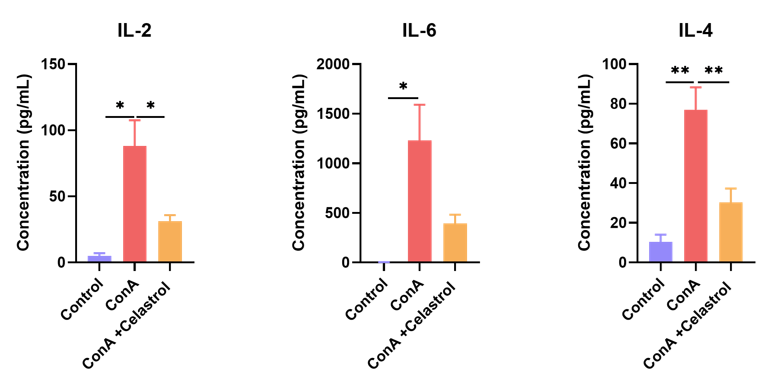
Celastrol treatment alleviate increased cytokines levels induced by Con A. *:P<0.05; **:P<0.01; ***:P<0.001 compared with ConA group.
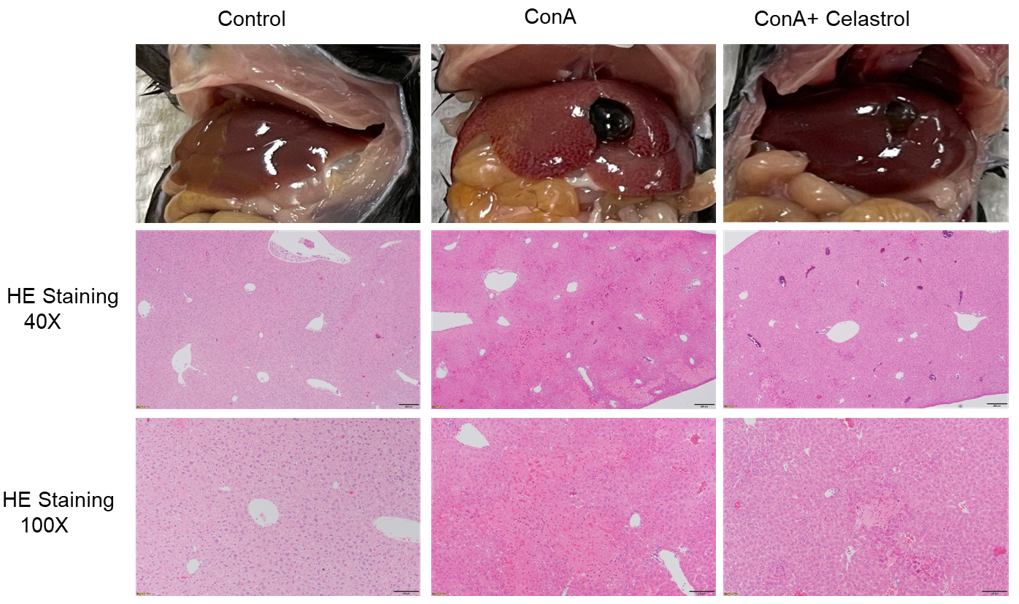

Pathological analysis in the protective effect of Celastrol on ConA induced NASH mouse models. (A) Tunel staining showing apoptosis in hepatic cells. (B) Statistic data of Tunel positive staining.












